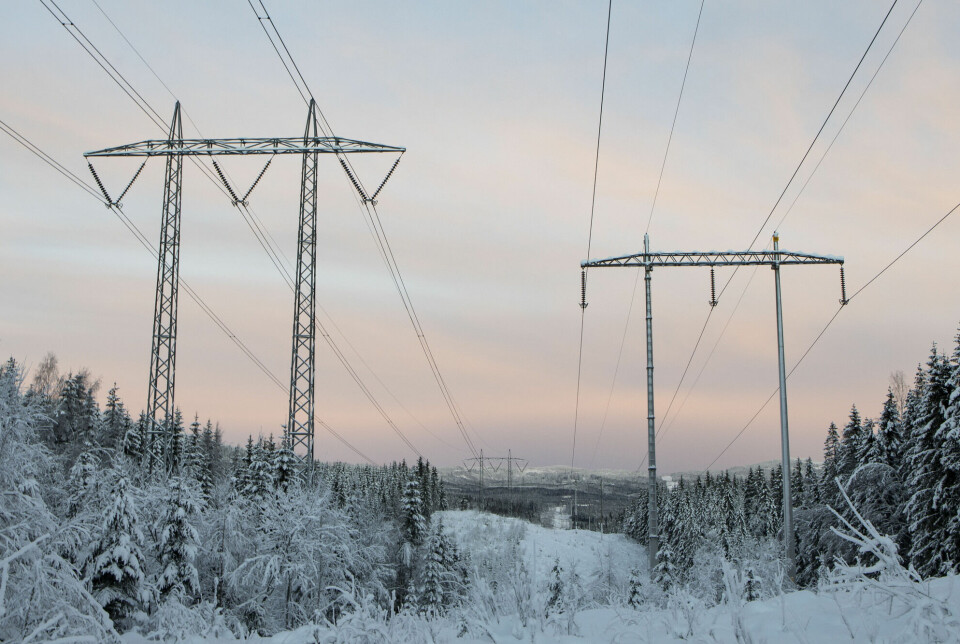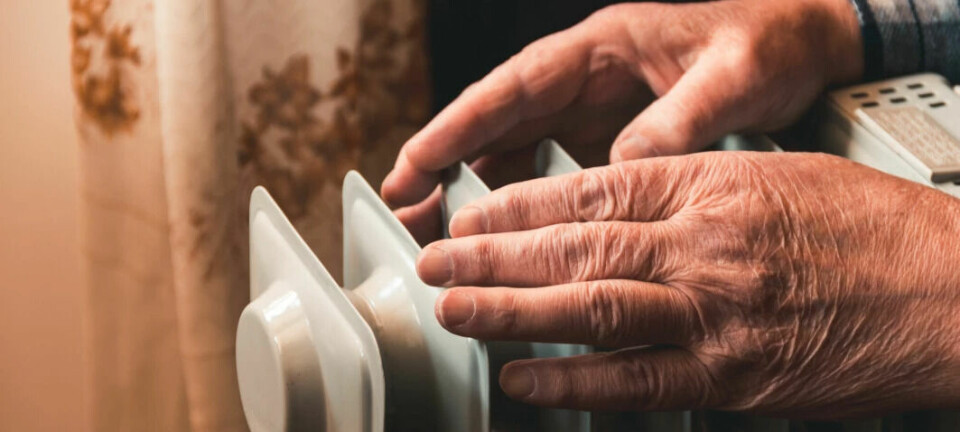
Climate researcher on power exchange abroad: It’s not the same as selling salmon
A researcher suggests setting limits for power exports when hydropower reservoirs are low. Bad idea, says an electricity expert.
Over the last three years, Norwegian households and businesses have experienced periods with much higher electricity prices than consumers have been used to.
Asbjørn Torvanger studies energy and climate policy at CICERO, the Center for International Climate Research. He is critical of this development.
Torvanger believes that the existing electricity exchange with other countries goes too far in maximising earnings at the expense of public interest.
“We only sell a bit of our power to other countries. But that means you raise the price of electricity more or less throughout Norway,” Torvanger says.
“The conventional wisdom is that the power exchange with foreign countries means that Norway gets paid more for the power. That is true enough, but most of the price increase is paid by customers in Norway, not in Germany and Great Britain. People often forget that,” he says.
The main effect of the power exchange now is a large transfer of money from the private to the public sector, Torvanger claims.
“It would be as if the government were to radically increase the electricity tax,” he says.
Price contagion
Europe generally relies on gas to meet its energy needs when there is not enough electricity from renewable sources, like wind or solar. Norwegian hydropower is also a valuable, adjustable power source.
“If you have little wind in Europe in the winter and a high demand for electricity for heating, Norwegian power becomes very valuable. The Germans will then pay a lot for that power,” Torvanger says.
This results in price contagion for Norwegian consumers, as long as there are networks that can transfer the power to other countries, he says.
“That’s why we have had such high power prices in the region where most of the electricity is produced, namely in the south. Southern Norway is almost a market through the international cables where the price is higher than in Norway," he says.
In other periods, Norway benefits from the connection because it allows imports of cheap wind power, enabling hydropower plants to save water. This approach allows reservoirs to act as if they are a water-based battery.
Torvanger does not believe that Norway should cut its ties to foreign electricity markets. There are also many advantages to a power exchange because production varies between regions, countries, and over time, he points out. But he believes changes should be made.
Critical infrastructure or a commodity?
The price of electricity became market-driven in Norway when a new Energy Act came into effect in 1991. Before that, prices were determined politically.
“According to the new law, power was defined as a regular commodity. It was going to be listed on the stock exchange,” Torvanger says.

The transfer of power between regions and neighbouring countries in a market should provide more secure supply and cover demand at the lowest possible cost, according to an article on Energy and Climate (link in Norwegian).
But how we should view shared electricity resources is definitely up for debate, Torvanger believes.
“Is power critical infrastructure in Norway, which we have all paid to develop over many years through network fees and taxes? Or should it primarily be perceived as a natural resource that we should try to get the best payment for?” he asks.
Torvanger thinks the Norwegian power market has gone too far in the latter direction.
“The Energy Act states that power producers should get as much as possible for their electricity. But we also have to consider the greater good,” he says.
We need power so that people can stay warm and so that communication, trade, and everything else can function in our digitised society, Torvanger points out.
“Selling electricity is not the same as selling salmon,” he says.
Would be expensive and affect the environment
Berit Tennbakk is a partner at Thema Consulting Group and an expert on the electricity market. She thinks Torvanger’s presentation is too simplistic.
“There are great variations in the Norwegian hydropower system. That is a very important reason why we trade with other countries. In normal years, we produce more than we need ourselves. If we can't export or store all the surplus, it's just like water flowing to the ocean. In dry years, we don’t have enough production and need imports,” she says.
If Norway didn’t participate in a regional electricity exchange, the country would have had to build more power plants to ensure it has a secure electricity supply during dry years. This would be costly and at the expense of the environment, she says.
Tennbakk agrees the market system means that the price consumers pay in Norway reflects the value the power has in the export market.
“It is clear that in the years when we export a lot and the price is high, this results in large transfers to the public sector,” she said.
Price differences are also about how much can be stored
In terms of the price difference between southern Norway and other parts of the country, Tennbakk points out that it’s not simply due to the capacity of the transmission lines abroad. It is also about how much water can be stored in the reservoirs and the transfer capacity between areas in Norway.
“When Sørlandet (in southern Norway) gets a high price, it’s also because they have a lot of hydropower with large reservoirs. This allows them to store water until prices are higher,” she said.
“In the eastern region, there is not as much power production and much less storage capacity. When the wet weather system called Hans struck this area, electricity prices went negative.”
This is because the eastern area of the country doesn’t have as much reservoir capacity, so power producers couldn’t store excess water until they could get better electricity prices, while at the same time there was not enough transmission capacity to other price areas to export the surplus.
Tennbakk says that it is debatable whether power is a commodity or critical infrastructure. She believes it is a combination.
“But I have some problems with the discussion that we should exchange power, but not export. How are we supposed to exchange without having a market-based system that sets the right prices?” she asked.
Existing problems
Torvanger points out what he believes are problems with the current situation:
High exports when the price is high in Europe can exceed power producers’ ability to fill Norwegian reservoirs. If the reservoir levels are too low, it could weaken Norwegian preparedness, which creates a risk of rationing, says Torvanger.
There have been big differences in electricity prices in different parts of the country. This creates different competitive conditions, he believes.
“There have been prices in the southwest that were many times higher than in the southeast, because the network does not have enough capacity. Then we get a situation where, for example, ice cream producers in the two regions have very different competitive conditions. Is this reasonable?” he asked.
The rapid increase in power prices has led to a major challenge for power-intensive sectors of Norwegian industry, which have relied on low prices, Torvanger said.
Possible mitigation measures
Torvanger suggests some mitigating measures:
- Set limits on power exports when hydropower reservoirs drop to a minimum level.
- Reduce the limit for electricity support for households from 5,000 to 3,000 kWh per month. This can strengthen the motivation for consumers to save electricity, while reducing the uneven distribution of the electricity subsidy to the households with the highest income and who use the most.
- Make fixed-price contracts more attractive both for households and industry.
- As a substitute for electricity support, consider introducing a two-price system for power in Norway, with a national share and an international share where power prices can be different.
Berit Tennbakk thinks introducing a two-price system is a bad idea.
She believes that prices should reflect the value of the power, to motivate energy efficiency and to encourage consumers to use less electricity when there is a shortage.
If Norwegians are going to have lower prices, that means they will lose that motivation, she says.
“The result is that we use more electricity less flexibly and that we have to build out hydropower more. That would be unfortunate both for the environment and for the climate,” she said.
Tennbakk is not worried that the current system will lead to the emptying of hydropower reservoirs and rationing. She thinks it is a bad idea to put restrictions on exports when reservoir levels fall below a certain level.
“When the reservoir levels are low, and especially if it is at the end of winter, we import power. Then it doesn’t help to set a limit on exports,” she said.
“If we are to set a reservoir limit to save more, then it must be done earlier. It is very difficult to do this in a sensible way.”
The market is designed to manage this itself. When water is likely to become scarce, it pays for producers to save on water. If they instead use a lot, they miss out on increased income in the future.
“The proposal for export restrictions has been investigated both by researchers and the authorities, and no one has come up with a better way to do it,” says Tennbakk.
The power support should be changed
When it comes to price differences between regions in Norway, Tennbakk says that everyone probably agrees that the electricity distribution network should be better developed. The price differences are due, among other things, to bottlenecks in the power grid.
“But with the large variations in rainfall both between years and between regions, it will also be disproportionately expensive and result in large intrusions into nature if we were to build enough network capacity to remove all bottlenecks,” she said.
The price also gives a signal to power-demanding companies that are starting up to establish themselves where there is a power surplus.
She agrees that more households should secure good fixed-price contracts and also that the electricity subsidy should be changed and designed so that it strengthens consumers’ motivation to save electricity.
———
Translated by Nancy Bazilchuk
Read the Norwegian version of this article at forskning.no







































